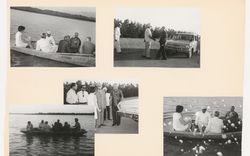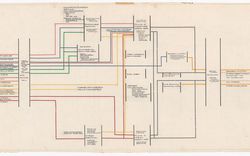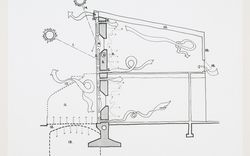A Primer: In absence of...
Rafico Ruiz on attuning to absence. Photographs by Stefano Graziani
Archives ask questions. They contain materials waiting to be assembled into a story. What pasts remain and what futures do they enable? For architectural historians, the archival record often, if not always, mirrors a four-dimensional reality—time beats on and marks the architect’s materials with life amidst its volumes. Yet in between the constitution of pasts and futures is a spectrum of absences. These absences may be marginalized events and sites; unruly artefacts, voices, and bodies; documentary traces that sanitize and exclude; intentional gaps entered into the supposed completeness of the historical record. Absencing is also a practice of history writing and ethnography that delimits what gets remembered, by whom, and for whom.
The 2019 edition of Toolkit for Today touched on the power-laden politics that inhere in the present reverberations of archival absencing. This names a process that is open-ended and always incomplete. It unfolds backwards and forwards in time while following the evidence presented by necessarily partial archival records. It engages with an expanded archive that exceeds the containment of paper, of concrete, climate-controlled vaults, and the evanescent plastic of digital servers. In its broadest terms, addressing archival absences suggests ways of research that push up against dominant narratives, hierarchies, and modes of representation in order to account for the annotation and redaction of archives.1
-
See Christina Sharpe, In the Wake: On Blackness and Being (Durham: Duke University Press, 2016). ↩
Critical reflections written by the 2019 participants of the Doctoral Research Residency Program will coalesce into a series that follows in the wake of the phrase “In absence of ….” Spread out across five themes—the absences of just stories, adequate objects, everyday truths, unknowable plus-ones, and false starts—these reflections constitute an intervention into the knowledges that are privileged and absenced by documentary archives—plans that omit domestic workers; models that are imbued with white masculinity; solar-efficient designs that mediate colonial violence. While this is the social-historical domain of critical historiography, it is also a means of foregrounding, as historian of African diasporic cultures Tina Campt suggests, the quiet resonances that can be emitted through a range of archival media of particular relevance to architectural and urban studies.1 This series sketches out ways of listening to these media through their differential and intersectional tones.
-
Tina M. Campt, Listening to Images (Durham: Duke University Press, 2017). ↩
Stefano Graziani, the CCA vaults, CCA commission for The Museum Is Not Enough, 2018.
This collection of reflections also figures as a teaching tool that can performatively show how architectural research can read, as Ann Stoler suggests, “along the archival grain.”1 Each instance of absence incorporates critical entry points for architects, curators, and researchers seeking out what could be thought of as marginalized voices and concerns, including those transecting race, gender, sexuality, and colonial erasure. These approaches are sometimes confined to looking in on our field, rather than becoming constitutive of its most central and important questions. Much like sociologist Suzanne Hall and architectural historian Huda Tayob’s recently released Race, Space and Architecture: Towards an Open Access Curriculum, wherein race-making and space-making are relationally intertwined by a collective of scholars working across dispersed geographies, time periods, and scales, the group’s work is an active intervention, inserting such archival exclusions and dispossessions into worn-out history surveys that, in many respects, maintain the status quo of Western, event-based, and masculinist histories of the built environment. To become attuned to absence is a first step in listening to a wider cross-section of history’s voices.
-
Ann Laura Stoler, Along the Archival Grain: Epistemic Anxieties and Colonial Common Sense (Princeton: Princeton University Press, 2008). ↩
Articles









